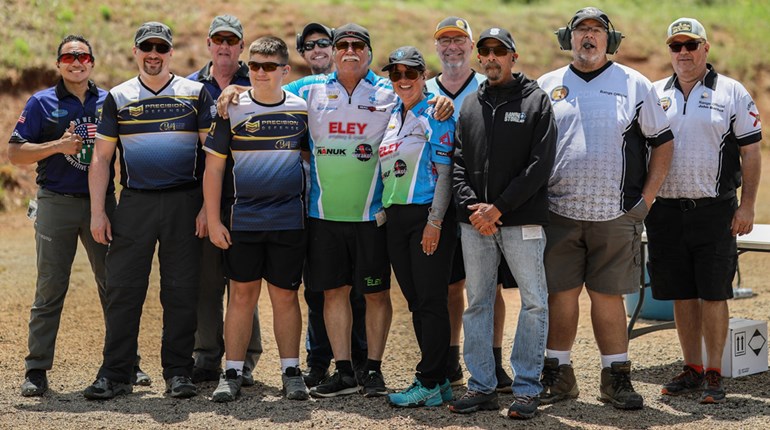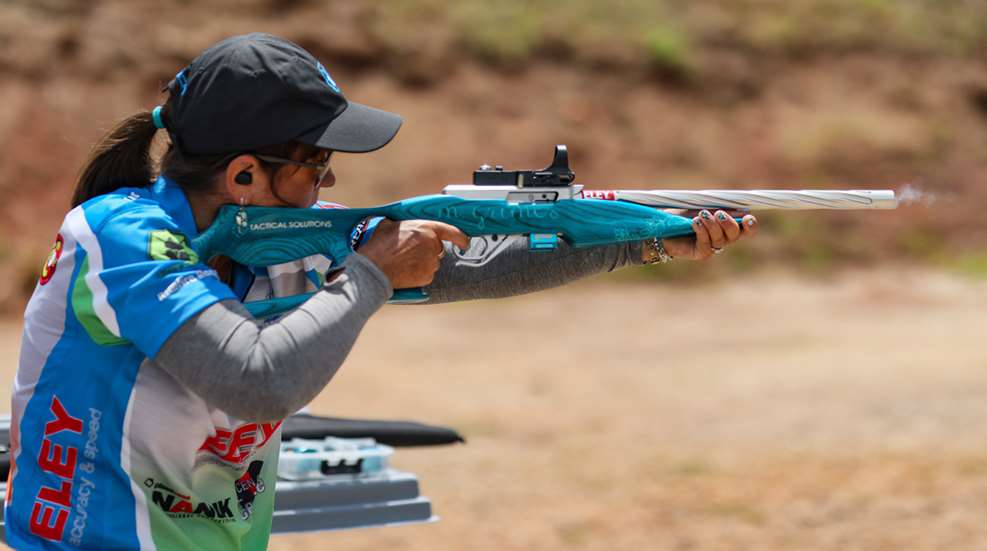
Ding, ding, ding, ding, ding! The ringing of steel plates as fast as you possibly can is what Steel Challenge is all about. Imagine hitting five plates ranging in size from 10-inch circles to 18x24-inch rectangles in less than two seconds; that’s what some of the fastest competitors in the world can do. Don’t worry if you can’t shoot that fast—there’s plenty of fun to be had by competitors of all ages and skill levels. It’s quite common for entire families to shoot matches together.
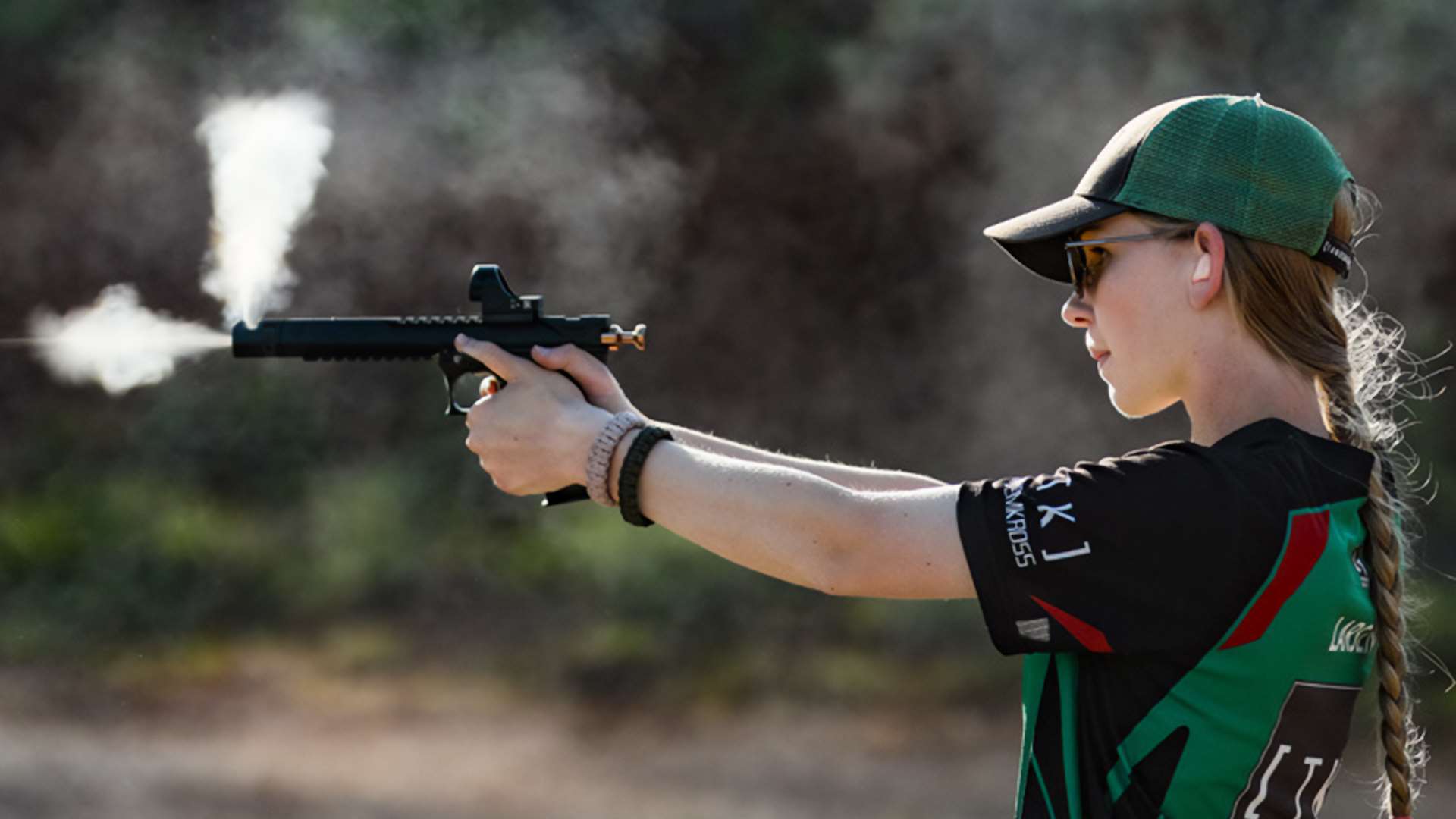
HOW DOES IT WORK?
A Steel Challenge match is comprised of up to eight official stages. Level 1 (club) matches are required to offer a minimum of two of the eight official stages and may offer other unofficial stages in the same match. Level 2 (state-level) matches are required to use a minimum of six of the eight official stages; only the two longest stages, Speed Option and Outer Limits, may be excluded in these matches. Area, Regional and Level 4 World Championship matches are required to offer all eight official stages, with no other stages in the match. These events may also offer side matches, which are not part of the match score, but allow you an opportunity to shoot a unique firearm of some sort.
When it’s your turn to complete the course of fire, you step into the shooting box. A range official will issue a series of commands for you to prepare your firearm. Once you’re ready, the timer will beep and you’ll shoot the five steel plates. Four of the plates can be shot in any order you choose. The last plate, known as the “stop plate,” must be shot last. This signifies that you have completed your attempt at the course of fire. The post for the stop plate is usually painted red or some other color so that new competitors can remember which plate to shoot last. If in doubt, just ask the range official. After shooting the five plates, your time is recorded either on paper or on an electronic scoring tablet. You repeat this process five times; each run is known as a string. After the final string is completed, your worst time is thrown out and the total time for your four fastest strings is your time for the stage. The competitor with the lowest total time for all stages is the winner for that match.
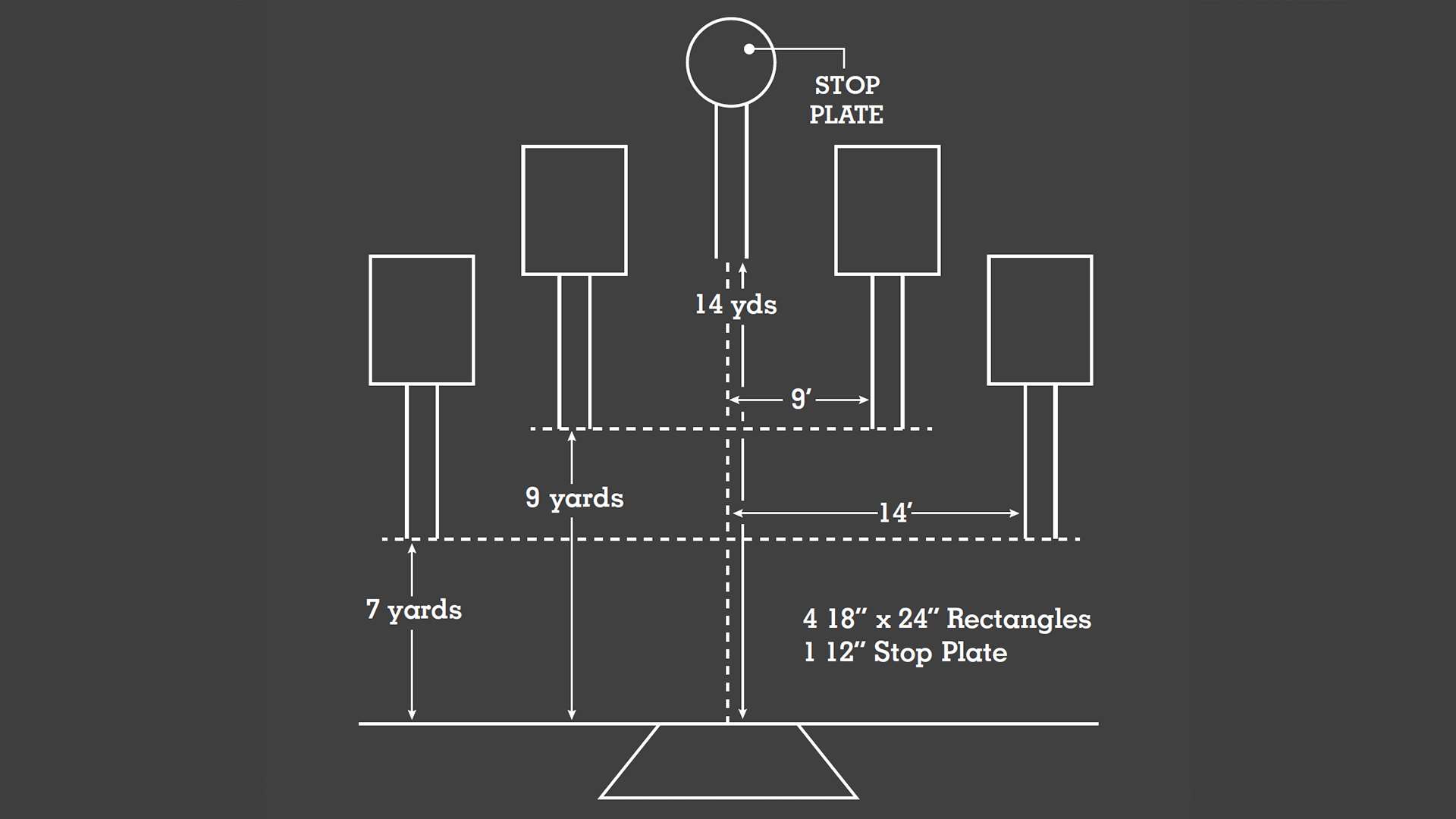
Steel Challenge events are divided into four separate matches. All centerfire pistols compete in the main match. Rimfire pistol irons and rimfire pistol open compete in the rimfire pistol match. Rimfire rifle irons and rimfire rifle open compete in the rimfire rifle match. Finally, pistol-caliber carbine (PCC) irons and PCC optics compete in the PCC match.
PICK A DIVISION
Equipment needs are minimal for Steel Challenge. You can compete with any rimfire pistol or rifle, a centerfire firearm or, in the most recently added division, pistol-caliber carbine. In total, there are 13 different divisions in Steel Challenge. Having five magazines is best, but you can get by with less when you are starting out. Be sure to bring as many magazines as you have, and odds are another competitor will lend you one, or would be willing to assist with reloading your magazine while you shoot, to keep the match running on schedule. All centerfire pistols start from the surrender position (wrists above shoulders), so you will need a holster for your firearm. All rimfire and pistol-caliber carbine competitors start from the low ready position; in front of each shooting box is an aiming flag or cone which you aim at while you wait for the timer to beep, signifying the start of your run.
EARN A CLASSIFICATION
USPSA members are eligible to earn a classification ranging from D (lowest) through Grand Master (highest) in each of the 13 divisions used in Steel Challenge. To become classified, a competitor must be a current USPSA member, and must shoot a minimum of four of the eight official stages. It does not matter which four of the eight stages you shoot and you don’t have to shoot all four at the same match. The classification system keeps track of the official stages you have shot and calculates your classification once you’ve shot four stages. Classifications are updated weekly on Wednesday, so you can track your progress from match to match. As you shoot each stage faster, you’ll earn a higher classification. Some competitors are so dedicated to Steel Challenge that they have earned classifications in all 13 Steel Challenge divisions.
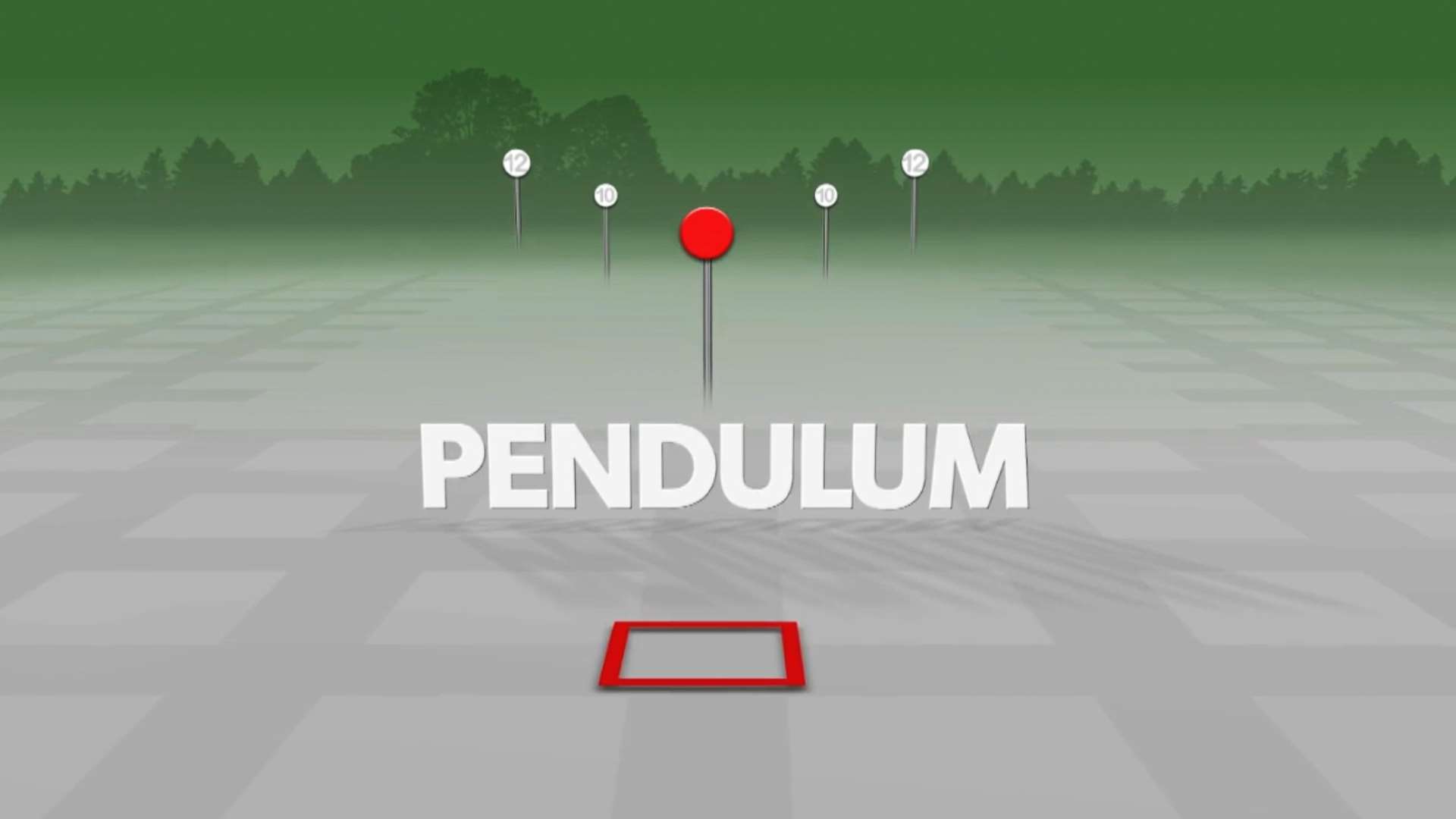
Recognizing that earning a classification in all 13 divisions takes a significant amount of time and dedication, the USPSA created “Club 13” to recognize those that had achieved this milestone. Palmetto State Armory agreed to sponsor a Club 13 challenge coin. The first 100 coins were gold. The second 100 coins were silver. The third 100 coins were bronze. Coins 400 through 500 are pewter in color.
GETTING STARTED IN STEEL CHALLENGE
Getting started in Steel Challenge is easy. On the website (scsa.org), you will find a list of sanctioned matches. Once you’ve found a local match, it is a good idea to contact the match director in advance and let him know you want to shoot the match. Some ranges may require an orientation prior to competing in the match. The match director can answer any questions that you have in advance of match day.
Once you’ve found the match, you’ll want to decide which division to shoot. As previously stated, there are 13 divisions in Steel Challenge. The centerfire pistol divisions align with the pistol divisions used in USPSA handgun matches; the rimfire and pistol-caliber carbine divisions are based on whether the firearm has an optic installed or not.
After you determine the firearm that you want to shoot, you need to make sure to bring ammo—lots of ammo. A typical five-stage club match requires a minimum of 125 rounds per firearm, and you should seriously consider bringing twice the minimum. You just never know when you may need to take an extra shot.
If you will be shooting a centerfire pistol, you’ll need a holster for your firearm, and for rimfire and pistol-caliber carbine, you’ll need a suitable bag or case for transporting your firearm between stages. For rimfire rifles and pistol-caliber carbines, you must have a chamber flag for each firearm you plan to shoot. The chamber flag allows range officials to instantly verify the firearm is unloaded while it is being transported between stages.
WANT TO KNOW MORE?
If you would like to know more about Steel Challenge or have any questions not answered in this article, please contact the Director of Steel Challenge, Zack Jones, at [email protected] and he’ll be happy to help in any way he can.
Article from the 2024 Annual edition of USPSA’s magazine.















